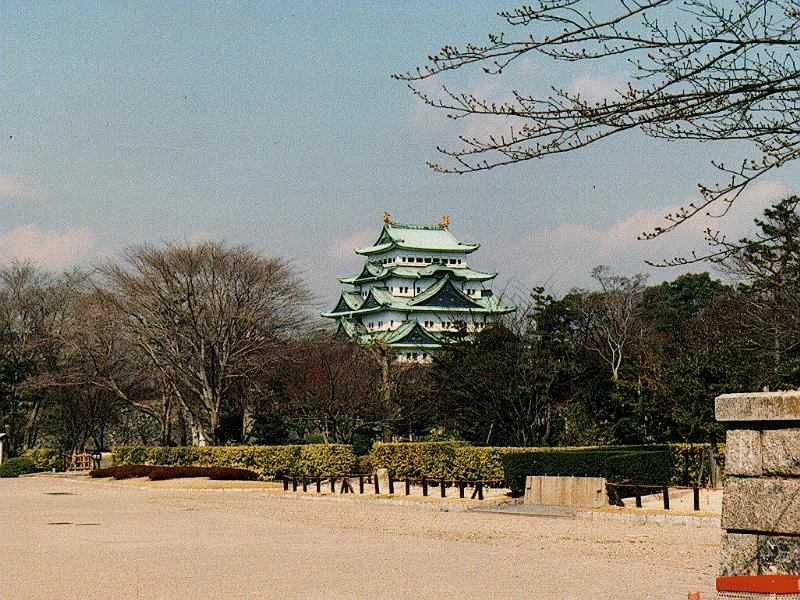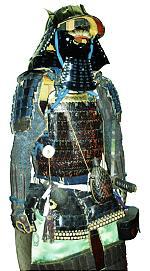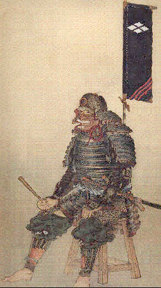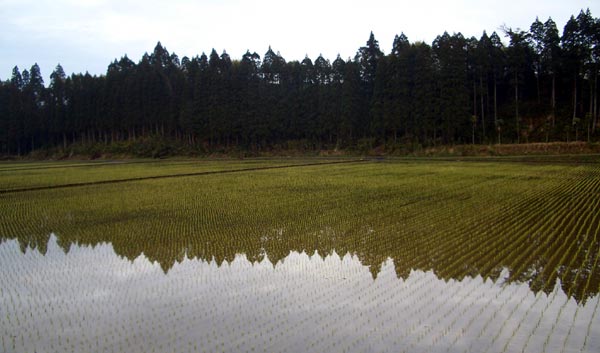First, two notes about this narrative: The Japanese sources which i have consulted to "fact-check" this narrative refer to the areas i will name both as districts, and provinces--i will use province as i believe it will give the English speaker an accurate picture of the type of region to which i refer. I believe most English speakers would consider a district to be a rather small area--while there were only about fifty such regions in the three southern islands of Japan in the 16th century, much more provinces than districts.
The second point is about the term "Nobunaga's ambition." This expression has become a commonplace in the history of this era in Japan. It is used in songs and plays from the era, in the titles of books, and even in popular contemporary video games. It is such a stock phrase in Japanese history, that i'm enjoying myself by deploying it here.
***************************************
 The Ujikami-jinja Shinto shrine at Kyoto.
The Ujikami-jinja Shinto shrine at Kyoto.
Oda Nobuhide was, ostensibly, the Daimyo of Owari province. However, to his north was the wealthy and powerful province of Mino, controlled by the Daimyo Saito Dosan. To the east, the powerful leader of clan Imagawa, Imagawa Yoshimoto, controlled Mikawa, Totoumi and Suruga provinces. The area of Ise, Owari, Mikawa, Totoumi and Suruga, from southwest to northeast, represents the east central coastal region of the main island of Honshu--the Pacific coast--and Owari corresponds to the area around the modern Japanese city of Nagoya. Across the mountains to the southwest of Owari and Ise lay the province of Oumi, and the ostensible capital at Kyoto on the southern end of Lake Biwa. To the west of Ise lay Yamato, the home of the Japan's earliest governments at the very beginning of the historical era, the Kofun period. Owari was at the southwest end of an agriculturally rich area bewteen Kyoto and the mountainous regions to the northeast where the clans Takeda and Uyesugi held sway--clan Hojo, although still militarily powerful, was then in its decline.
Nobuhide could, therefore, just manage to hold his own against the Imagawa threat to the east, but he could not seize the northern marches of Owari, where clan Saito held sway from their base in Mino--largely because of constant feuding within clan Oda. The agricultural and commercial wealth of Mino was greater, and clan Saito long a powerful and competent power in this most important region. But Nobuhide was politically adroit (a trait which, although not immediately evident in Nobunaga, would prove to be his greatest asset in his short but amazing career)--he married his adolescent son Nobunaga to Saito Dosan's daughter in 1549, overcoming Dosan's misgivings, as Nobunaga had a reputation as a hellion, what we might call a juvenile deliquent. With the northern marches, a rich region, now in hand, Nobuhide was now able to quell the rivalry within clan Oda, and turn to the east to confront Imagawa and his powerful forces in Mikawa.
 A near-contemporary Japanese image of Imagawa Yoshimoto.
A near-contemporary Japanese image of Imagawa Yoshimoto.
Mikawa rankled under the Imagawa domination from Totoumi to the east. The clan Matsudaira was not militarily powerful, but respected and influential in Mikawa. Matsudaira Hirotada had spent his life battling both clan Oda and clan Imagawa, to keep Mikawa free. In 1543, his son Takechiyo was born. Hirotada faced the same situation as Oda Nobuhide--he represented on faction of clan Matsudiara, that which preferred alliance with clan Oda, the other faction of the clan betting on the power of Imagawa. Quixotically, Hirotada went against the wishes of his branch of the clan and decided to joing with Imagawa. Shortly after Nobuhide had made his alliance with the powerful Saito Dosan, he managed the greatest coup of his career--he captured the boy Matsudaira Takechiyo as he was being sent to Imagawa as a hostage. But his glory was to be short-lived, in 1549 he died, leaving his eldest son, Nobuhiro in charge. Matsudaira Hirotada had died shortly before, and now both clan Oda and clan Matsudaira were effectively leaderless. Imagawa Yoshimoto struck quickly, and sending Imagawa Sessai into Mikawa, that province was overrun, and Owari invaded. Sessai defeated Oda Hobuhiro, and secured the person of Matsudaira Takechiyo, who was removed to Totoumi, where he grew up in exile. The resentment of clan Matsudaira simmered, and the factions were now unified, apprehensive about the loss of support from clan Oda, and growing to hate the pretensions of clan Imagawa.
 This image of Nagoya Jyo--Nagoya castle--is of an ancient Owari fortess of clan Oda preseverd to the present day.
This image of Nagoya Jyo--Nagoya castle--is of an ancient Owari fortess of clan Oda preseverd to the present day.
In Owari, clan Oda faced a similar situation. The factionalism which had threatened the clan under the strong leadership of Nobuhide disappeared under the weak leadership of Nobuhiro as it became apparent to clan Oda that they faced oblivion. Because Nobunaga had played the deliquent for so long, and had behaved badly at the funeral of his father Nobuhide, the third son Nobuyuki became the hope of the clan. When Imagawa Sessai had defeated the Oda, Nobuhiro had been made a hostage, and Nobunaga, just seventeen, had been obliged to agree to Imagawa terms to secure the release of his elder brother, then the clan leader. Nobunaga's position has sunk as low as it could possibly have reached. Imagawa Yoshimoto was astute, and Matsudaira Takechiyo was well treated, and well raised. When he reached his majority in 1556 (with his father dead, such an early entry in to manhood was not considered unusual in Japanese society of the time--parallels in European history are numerous). He changed his name to Matsudaira Motoyasu, and his release from Imagawa control was secured on the basis of his agreement to lead the forces of Mikawa into Owari against clan Oda. At Terabe, Motoyasu defeated the forces of clan Oda and won a name for himself. When Oda Nobuhiro died shortly after, although the clan favored the younger Nobuyuki, Nobunaga made himself the clan leader by relying on the support of the Saito clan of Mino, and old retainers of his father who demonstrated better judgment about the character of the claimants to clan leadership. Largely, Owari and clan Oda disapproved of the choice, but with the old Daimyo's best military men at his back, Nobunaga made good on his claim.
Meanwhile, on the strength of Motoyasu's new-found military fame and the dominance of the men of Mikawa in Imagawa's western army, clan Matsudaira demanded greater autonomy. As Imagawa held Motoyasu's wife and family hostage, he agreed. In 1560, Imagawa Yoshimoto finally succumbed to hubris, and marched with what was then a fairly large army--perhaps as many as 20,000--on Kyoto itself. Matsudaira Motoyasu and the men of Mikawa succeeded immediately in their first mission, taking the gateway fortress of Marune. But Motoyasu held back, in line with the sentiment of the Mikawa contingent, and Imagawa Yoshimoto was defeated in a very bloody battle at Okehazama, and died on the field. The great power of Imagawa in Japan plummeted, but their hold on Mikawa was still secured through hostages, not the least of whom were Motoyasu's wife and family. In 1561, therefore, Motoyasu concluded a secret agreement with Oda Nogubnaga to ally against the forces of Imagawa and the province of Totoumi. Motoyasu proved his loyalty to his new ally by taking the Imagawa fortress of Kaminojo, and taking hostage the commander, Udono Nagamochi. Imagawa Ujizane, who had succeeded his father Yoshimoto, was far less politically astute, and decided that clan Udono were more important vassals, and, incredibly, released the Matsudaira and Mikawa hostages in return for the release of Udono Nagamochi. In a single stroke, Motoyasu had achieved freedom of action and secured the complete loyalty of the military men of Mikawa. This he cemented by leading them in a pacification of Mikawa, and the distribution of land and castles.
 This castle, one of the Takeda castles in the region to the northeast of Owari and Mikawa, is a better representation of a strong military outpost.
This castle, one of the Takeda castles in the region to the northeast of Owari and Mikawa, is a better representation of a strong military outpost.
Oda Nobunaga remained a cypher, and seemed the junior partner in the relationship. It seemed that Matsudaira Motoyasu was more the prop for Nobunaga than the reverse. Oda, however, was quietly eliminating powerful rivals in clan Oda, by assassination more often than outright conflict, and by redistributing lands and castles to his father's former officers, much as Motoyasu was doing in Mikawa.
***************************************

All of this would nothing more than a dull and confusing story of petty clan warfare on the Pacific coast of Japan . . . were it not for Nobunaga's ambition . . .

























